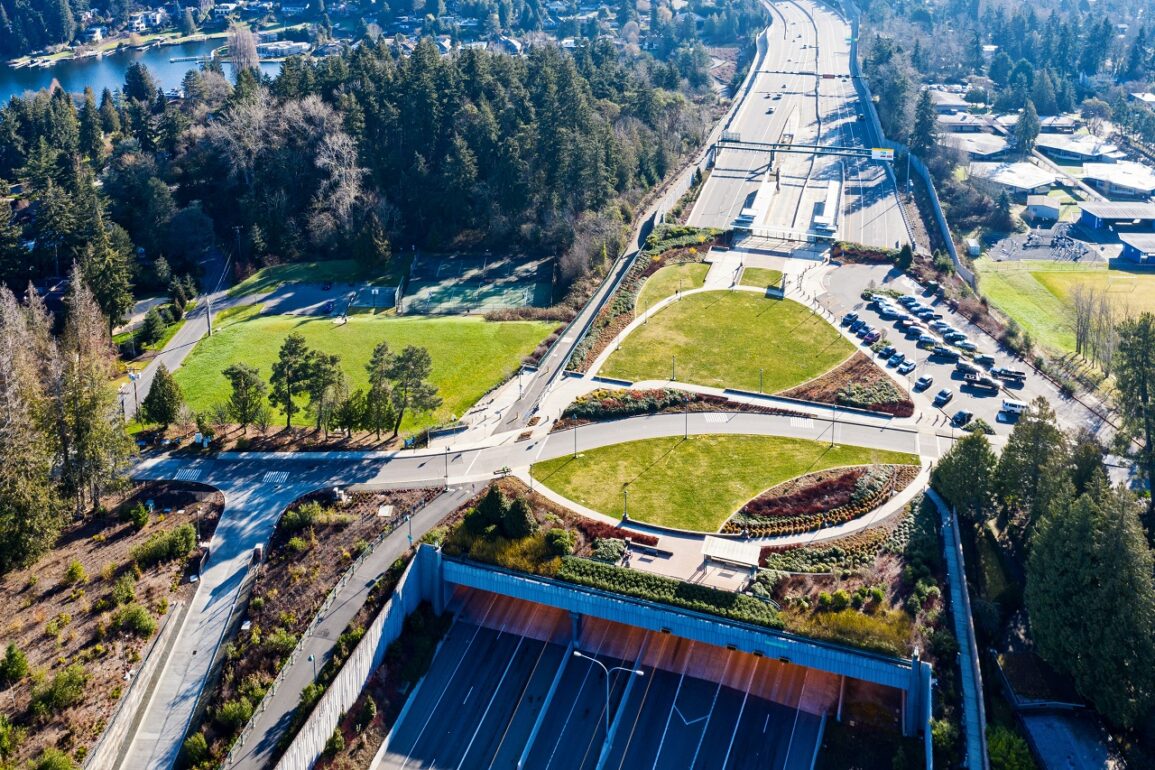Those who regularly commute to and from the Eastside along Highway 520 are certainly familiar with the short underpasses that dot the road. These three underpasses are the result of what sits atop them: lids — grassy, park-like coverings built by the state to reduce noise from the highway and create a usable outdoor space for the affluent communities that surround the highway.
The 520 lids were built in the early 2010s as part of an HOV and bus lane expansion project. While the road was in need of expansion to accommodate an increase in traffic, the neighborhoods above, Clyde Hill, Hunts Point, Yarrow Point and Medina, were concerned about disruptions from the increase in traffic.
The solution offered by the state was the 520 lids. In total, the lids represent a $100 million investment, with landscaping, roundabouts, and seven acres of greenspace that connects the various neighborhoods. Two of the lids have roundabouts that connect to the traffic below, and all of them are transition points for walkers and cyclists on the 520 trail that runs along the highway.
While all parties can agree that the lids are nice, the issue at hand is who should be responsible for maintaining them. The lids feature dense plantings and manicured lawns, which the state has been taking care of since they were constructed.
The cost of maintaining the lids isn’t cheap—around $30,000 a year, per acre, or $200,000 total each year. While the lids primarily benefit affluent Eastside communities, the local governments that would have to take on the cost of maintenance simply aren’t equipped to do so. Limited retailers and restricted property taxes in the neighborhoods mean the local governments are often operating with constricted budgets.
The state, meanwhile, is ready to move on from the lids and focus its attention on road maintenance and other new projects. With a resolution pending, the state has said it will remove the garbage cans from the lids and only mow the parts of the lawns that are visible, among other reduced services.
In other areas with lids, the cities are primarily responsible for maintenance, with some support from the Department of Transportation. Mercer Island maintains the I-90 lid, and Seattle will care for the Montlake lid when it is complete.
At the moment, the state and cities seem to be at an impasse. The State Legislature has allocated $115,000 toward a dispute resolution process for the matter, hopefully encouraging the two sides to come to an understanding in the near future.
Information for this article was sourced from The Seattle Times.




